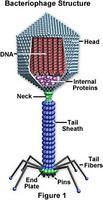The destruction of the Russian nation by means of a simple strand of molecules. A virus. A virus that can discriminate. A virus that can discriminate between races, religion and region. A virus that can kill selectively, wantonly, and massively. A deadly virus. A virus from hell.
But is it practically feasible? I believe not. But I can imagine an even more deadly scenario. A deadly scenario that would actually be beneficial to us, humans.
The virus in question would have to be programmable, in order for it to descriminate between different groups of people. A virus, being a physiological pathogen, would be able to discriminate between physiological differences in people. But would it be able to discriminate between the arbitrary, non-physiological differences between different groups of people?Very evidently, this wouldn't be possible. A simple example would be to use a hypothetical virus that should be able to infect all Arabs (no offense here, please!). This sounds plausible enough - many individuals with Arabic blood would probably have a similar weakness to its virus. But let's say the virus was re-programmed to target all Muslims (again, no offense here!). Would this be practically feasible? Evidently not. Religion, being an arbitrarily defined trait of a human, which also happens not to have a physiological-based discriminator, would be a poor candidate as a victim for the virus' lethal capabilities. In other words, there wouldn't be a single cell-surface protein or receptor that would be present in all Muslims that would be their Achilles heel. That would render the virus useless wrt, (please, no offense here!), infecting all Muslims. Which, then again, would be a thankful thing. I wouldn't want to see my Muslim friends go off to see Allah before I see the external part of our universe, if you get what I mean.
But think again. The virus' discriminating capabilities would need to have a physiological basis. Yes, it would have to be rooted in what we know about cells, their differences, and their roles in the human body. Now, wouldn't that be fascinating? Imagine what we could do with engineered viruses - we could cure cancer.
How could this be possible?
Simple. Let's build on recent developments.

But then again, so what?
Well, let's take a look at the structure of a virus. (My favorite is the one that many people see - the bacteriophage.) A virus generally has a strand of nucleic acid, containing their genetic data for its own replication in a host's cell, and a protein coat, to protect the nucleic acid from degeneration. The part of the virus that is in interest is the nucleic acid.

There are two types of nucleic acids, deoxyribonucleic acids (DNA) and ribonucleic acids (RNA). Both are capable of storing genetic information, and both can direct protein synthesis. Viruses can hold RNA as their genetic material. When viruses infect a cell, they inject their own genetic material into the host cell, which will then interfere with the host cell's ability to do protein synthesis. It is this property that we need to harness to use a virus in combating cancer.
With the advent of "designer drugs", the processes that I'll be discussing likely won't be a distant dream of the future. If we can insert siRNA into a virus and join it up with the other forms of genetic material that are already present inside the virus, then we could potentially create a virus that, with the help of cell-surface signalling proteins, could home in on cancer cells (which would have that unique cell surface identifier I discussed in my 2nd post) without infecting our own body's cells. It would then inject its own genetic material and the siRNA, which would then help to splice up the oncogenes that are so vital to the survival of the cancer cells. In other words, viruses are our vector - much as viruses require a vector to transmit from one person to another, we now use viruses as our "shuttle bus" to transport the siRNA from the lab into the human body.
Ah. Finally got this idea off my head and onto my blog. Cheers to Blogger for this.




